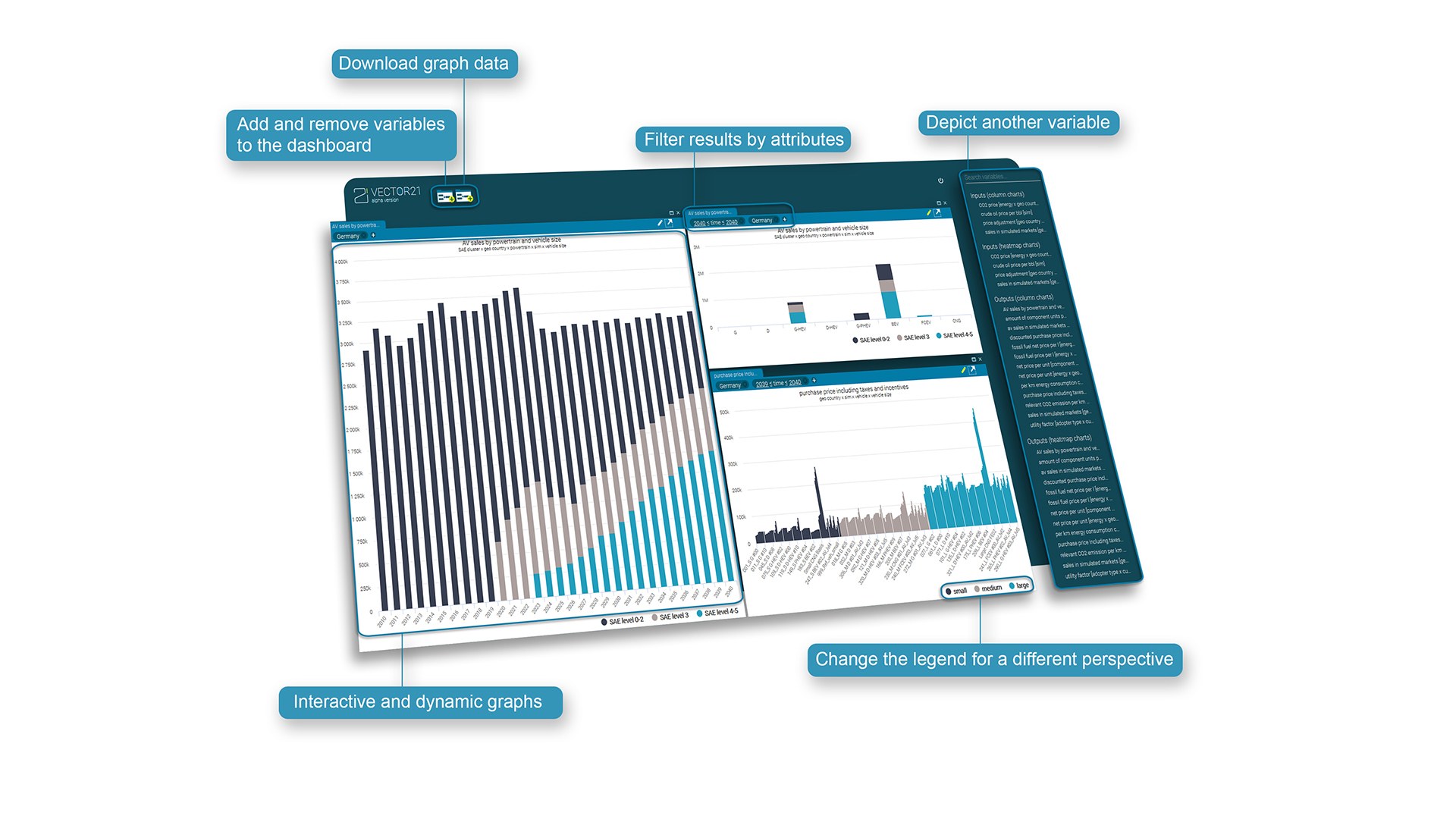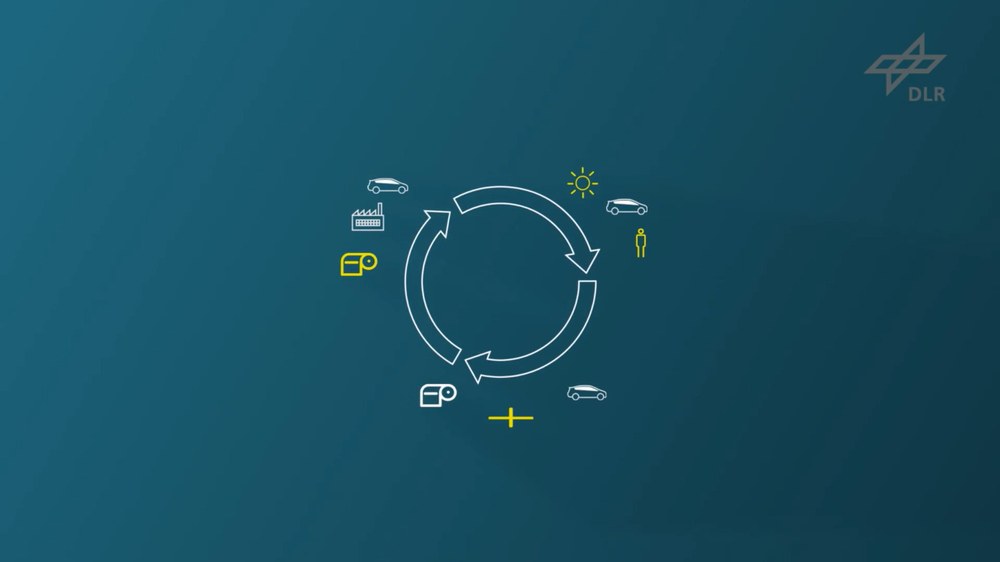Market simulation VECTOR21

Since 2007 the DLR Institute of Vehicle Concepts is conducting research on the underlying causalities and interdependencies of vehicle markets. VECTOR21 incorporates this knowledge in a detailed bottom-up scenario and market analysis software for simulating future market developments. It is able to assess how future vehicle technologies will penetrate markets in Europe.
Interactive, rapid scenario analysis in teams

VECTOR21
Your consent to the storage of data ('cookies') is required for the playback of this video on Quickchannel.com. You can view and change your current data storage settings at any time under privacy.

VECTOR21
- Regional, national and international market modelling: The software offers market segmentation enhanced by geographical information on regional level (e.g. NUTS3), country-specific policies and regulations can be modeled as well as interdependent international markets
- Scientifically validated and flexible model design: Scientific validation guarantees high-quality results. Furthermore, the software allows ongoing model extensions as well as customized adjustments to personal needs
- Extensive and constantly updated input data line chart: Default data allows to start simulations immediately. Time-consuming data research and processing is avoided. Data can be added where necessary
- Intuitive & comprehensible data visualization: Makes understanding of and discussing about complex data possible. Strategic conclusions can be drawn easily
VECTOR21 is applicable in the following areas
VECTOR21 separates the simulated market in several segments. Each segment holding a certain market-share is represented by a customer agent with certain customer characteristics. On the supply side the offered vehicles are composed of an adjustable number of vehicle parts. Year by year the discrete choice algorithm calculates the customer‘s purchase decision of every agent:

VECTOR21
Customer side: A customer agent is modelled for every customer segment. The granularity of the customer‘s characteristics are adjustable as well as their geographical distribution.
Utility-based purchase decision: The purchase decision of every agent is simulated by an algorithm comparing the customer‘s needs to the characteristics of the vehicles offered. Every agent decides for an offer maximizing its utility function.
Supply side: The offered vehicles incorporate detailed vehicle technologies and costs. The granularity of the vehicle modeling as well as pre-defined technology development steps are adjustable to the personal needs.
Key Results
The VECTOR21 simulation delivers a large number of results supporting your strategic decisions on vehicle markets. The most important results are:
- Market-shares of powertrains and components in different socio-demographic and geographical segments
- Cost development of vehicles and components over time
- Diffusion of new technologies with feedback loops on costs of vehicle components
- Energy consumption development of energy consumption of vehicle stock
- Automatic component sizing an optimizing algorithm determines the optimal size of components (e.g. batteries and efficiency technologies) according to the customer’s needs
- Emissions & CO2 limits CO2 emissions of manufactured vehicles and the adherence to CO2 limits

Vector21
External Influences
Infrastructure modelling
Regional distribution of infrastructure demand and availability
Political influences
Country-specific taxes, subsidies and regulations
Supply-side framework
Strategies to react on CO2 regulation and production enlargement limits
Energy costsModelling costs from source to end user


